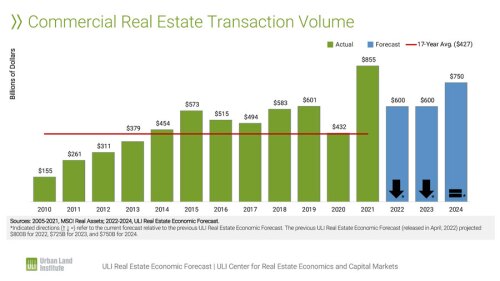This article is republished with permission from TreppTalk.
Although industrial real estate investment trusts (REITs) led the pack with 30.7 percent total returns in 2016, the sector’s performance to date in 2017 has been relatively soft. According to NAREIT, industrial REIT returns are at 4.72 percent year-to-date, compared with 18 percent for data centers, 15.7 percent for infrastructure REITs, and 13.7 percent for single-family homes.
This may come as a surprise to some, since industrial real estate fundamentals are particularly strong. According to research firm Zack’s, industrial REITs have more and more opportunities “amid economic expansion, [the] e-commerce boom, and heightened urbanization, [as] companies are shifting their strategy toward services like same-day delivery . . . propelling demand for warehouse distribution facilities. Further, with a wider customer base, these companies are opting for supply-chain consolidation, resulting in higher demand for logistics infrastructure and efficient distribution networks.”
The industrial sector responds most favorably to rising gross domestic product (GDP), consumer spending (particularly online), and global trade. Trade may be a significant factor behind the slowing performance in 2017. Political uncertainty under the new U.S. administration has heated up, causing many to fear “risks to the continued growth in global trade, which, along with e-commerce, has been the fuel that has powered the continued strong performance from these companies.” Should political tensions affect the global supply chain, industrial assets near major shipping ports are most at risk.
Changes in domestic supply levels also may be hindering industrial REIT performance. In recent years, the industrial sector’s success was largely tied to very low levels of new supply growth, which gave REITs significant pricing power to raise rents. High construction costs and a lack of available land have kept new supply in check over the past several years. However, e-commerce sales have skyrocketed and appear to have pushed demand for warehouse space over the edge, as construction spending on warehouse assets has escalated considerably since early 2014. Last year, over 200 million square feet (18.6 million sq m) of industrial space was delivered, and more new supply in the pipeline could offset industrial rent and occupancy growth in the future.
While market players will continue to watch construction activity and political repercussions, industrial fundamentals are still among the strongest of all REIT property sectors. To boot, rent growth has remained solid as of late. Leading REIT Prologis estimates that global e-commerce sales will double over the next five years, which will keep warehouse demand extremely high. Industrial REITs also offer relatively low sensitivities to interest rates, providing stability if rates should increase faster than economic growth.
* TREPP-i Survey Loan Spreads levels are based on a survey of balance sheet lenders. For more information, visit Trepp.com.


